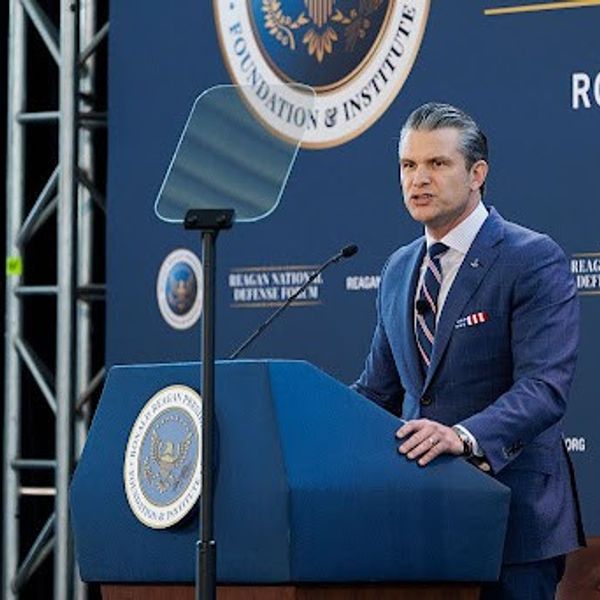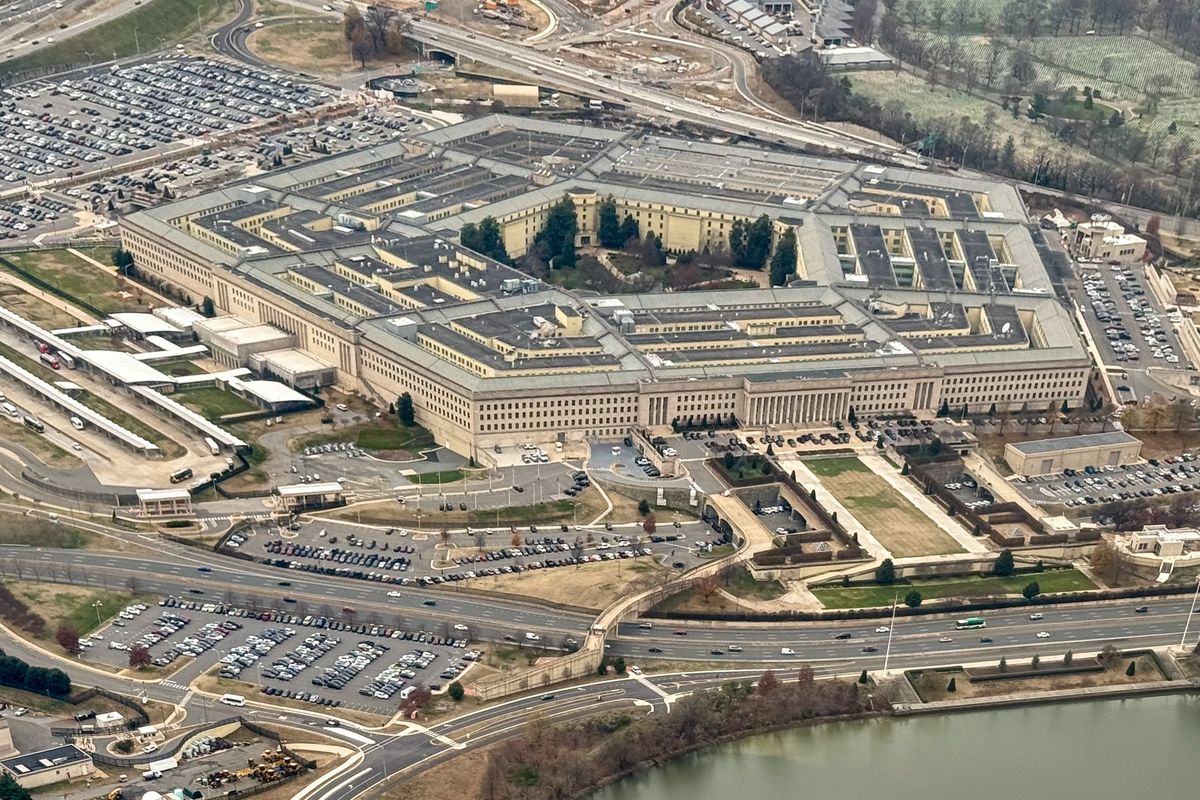OPINION — It has been 31 years since the U.S. halted nuclear weapons testing, yet last Tuesday Jill Hruby, head of the National Nuclear Security Administration (NNSA), told the 2023 Nuclear Deterrence Summit, “We know more about nuclear weapons now that we did when we were actively testing. And the best part, we expect those capabilities to continue improving.”
While public attention has been focused on China’s growing nuclear activities, the NNSA nuclear weapons complex has had two scientific breakthroughs that I expect will keep the U.S. ahead in nuclear weaponry for years to come.
As Hruby put it last week, “First, our computer modeling capabilities will be getting a big upgrade in the near future. El Capitan, the first exascale [super digital] computer designed for national security, is expected to arrive at Lawrence Livermore National Laboratory this year…It will, for a time, be the world’s largest supercomputer.”
El Capitan — built by Hewlett Packard Enterprise and AMD — can do a quintillion [a billion billion] calculations per second and perform the 3D simulations that are essential to meet the demands of the NNSA Life Extension Programs and address nuclear weapon aging issues.
Back in 2019, when the El Capitan contract was first announced, Rob Neely, Livermore’s advanced simulation and computing coordinator, said, “Twenty years ago, people would laugh if you said we could field a new [thermonuclear weapons] system in the stockpile without going to [live] testing. They just didn’t believe it.”
El Capitan’s supercomputing capabilities, Neely said, would allow verification without the use of underground testing of new W87-1 warheads for the planned Sentinel intercontinental ballistic missile (ICBM), which will replace the Minuteman III ICBM beginning in 2029.
Also at last Tuesday’s Nuclear Deterrence Summit, Hruby hailed Livermore’s National Ignition Facility (NIF), which she said, “has opened up a new chapter in Stockpile Stewardship, enabling us to study new regimes. Unlocking ignition at NIF will allow us to probe the extreme conditions found at the center of nuclear explosions and address significant long-standing stewardship questions.”
NIF, according to the Livermore website, is the world's largest and highest-energy laser and “the only facility that can perform controlled, experimental studies of thermonuclear burn, the phenomenon that gives rise to the immense energy of modern nuclear weapons. It provides unprecedented experimental access to the physics of nuclear weapons.”
Cipher Brief Subscriber+Members enjoy unlimited access to Cipher Brief content, including analysis with experts, private virtual briefings with experts, the M-F Open Source Report and the weekly Dead Drop - an insider look at the latest gossip in the national security space. It pays to be a Subscriber+Member. Upgrade your access today.
In her Tuesday talk to the Nuclear Deterrence Summit, which is a trade show primarily for nuclear contractors and government officials, Hruby went over the five major modernization and life extension programs currently underway for U.S. nuclear warheads and bombs that are currently deployed.
“Last year, we reached the first production units for both the W88 alt 370 sub-launched warhead and B61-12 gravity bomb, and both programs are now in full-scale production and on track to meet Department of Defense schedules,” she said.
The 475-kiloton-yield W88 warhead [remember the Hiroshima bomb was just 12.5 kilotons] is atop one-third of the 280 operational U.S. sub-launched Trident II missiles, the first of which were deployed some 30 years ago. While the newly produced alt 370 version will replace older, deteriorating warhead elements, the most important upgrade is in the arming, fuzing and firing (AF&F) system, which is described by Sandia Laboratory which designed it, as the “brains of the warhead.”
The new W88 AF&F system receives and confirms the correct Presidential-generated code that unlocks the firing system. It then does not fully arm the system until the missile is launched on an authorized flight away from the submarine on the way to the target.
The new B61-12 gravity bomb will serve all future missions for both strategic and tactical aircraft. Approximately 450 B61-12s are expected to be produced over the next five years. The new version will have an Air Force-supplied tailkit assembly that guides the bomb to its target using a digital interface between the bomb and the aircraft delivering it.
“The B61-12 will have improved accuracy to enable it to threaten targets currently requiring higher yields,” Hans M. Kristensen and Robert S. Norris wrote in last month’s Bulletin of the Atomic Scientists. The new tailkit will also provide a limited standoff capability which will increase safety to the aircraft delivering the bomb.
The first B61s go back to the mid-1960s, although in the past 15 years, the numbers have sharply dropped, according to Kristensen and Norris. The tactical B61s have had a dial-a-kiloton yield capability, some of which were lower than one kiloton and as high as 170 kilotons. The B61-7 strategic bomb ran from a low 10 kilotons to above 300 kilotons, while be B61-11, designed for ground penetration to hit underground bunkers ranged up to 400 kilotons. Approximately 50 B61-11s were produced in the 1997-to-1998 period.
There are some 820 B-61s operational today although only 300 are deployed at bases with operational aircraft. Of that number, less than 200 B-61s are stored in five NATO countries – Belgium, Germany, Italy, the Netherlands and Turkey.
Kristensen and Norris expect approximately 480 B61-12s will be produced through the mid-2020s, and will lead to the retirement of three of the five B61 versions that exist today. The B61-11 earth penetrator will remain along with the B61-4, which with the new tailkit, will convert to a B61-12 bomb serving strategic and tactical missions with both low- and high-yield capabilities.
Hruby also mentioned the three other modernization systems that have not reached production.
There is the W80-4 warhead which, she said, is “on track to meet operating schedules” for the Air Force Long Range Standoff (LRSO) cruise missile. The LRSO will replace the 500 aging, nuclear Air Launched Cruise Missiles (ALCMs) that first went operational in the early 1980s, with a 10-year design life. The proposed LRSO, which has stealth capabilities, will be used on all three U.S. strategic nuclear bombers, the B-52, B-2 and the next-generation B-21. Armed with the nuclear LRSO, from outside enemy airspace, these bombers could attack multiple targets up to 1,500 miles away.
The NNSA program for the W80-4 is primarily just extending the life of the ALCM’s W80-1 warhead by using the existing insensitive high explosives design and incorporation of modern components and safety features. The first production units are expected by fiscal 2025.
The W87-1 Mod warhead is under development for the 642 planned new Sentinel ICBMs to replace the Minuteman III ICBMS, 400 of which are currently deployed. The W87-1 is based on previously tested nuclear components but does not provide new military capabilities.
At last Tuesday’s Nuclear Deterrence Summit, Dr. Marvin L. Adams, NNSA’s Deputy Administrator for Defense Programs showed a slide which illustrated that the W87-1 will be the first U.S. warhead made entirely with every component made new - at least that is the plan. As noted earlier, the plan also is that the W87-1 will be certified without the need for additional underground nuclear testing.
It's not just for the President anymore. Are you getting your daily national security briefing? Subscriber+Members have exclusive access to the Open Source Collection Daily Brief that keeps you up to date on global events impacting national security. It pays to be a Subscriber+Member.
The Air Force expects the first nine Sentinel ICBMs, armed with W87-1 warheads, to reach initial operational capacity by 2029, with the full deployment of 400 Sentinels completed by 2036.
The W93, the first truly new-design warhead since the 1960s for a sub-launched ballistic missile, is being developed jointly with the United Kingdom (UK) as part of the Royal Navy’s modernization of its nuclear forces. The UK is constructing four new Dreadnought-class submarines whose sub-launched missiles need the W93 as its warhead.
In the U.S., the W93 appears to supplement the W88 and W76-1 warheads now being deployed. Completion of the first W93s for production is tentatively scheduled for the 2034-to-2036 period, according to the Department of Energy.
Finally, at last week’s Nuclear Deterrent Summit, NNSA’s Hruby updated the construction work taking place to rejuvenate older elements of the nuclear weapons complex. She said, “We will be completing the Uranium Processing Facility at Y-12 [at Oak Ridge, Tenn.] and continue work on other projects for secondary production such as lithium processing. We have also started work to expand the Kansas City National Security Complex for non-nuclear production…Beyond these projects, we must modernize and secure our supply chain for high explosives [and] expand capacity at Pantex,” the assembly and disassembly facility that is 30 miles east of Amarillo, Texas.
As for the complicated issues surrounding production of plutonium pits, the triggers for thermonuclear weapons, Hruby said, “In the next 10 years or so, NNSA intends to complete two new construction projects for pit manufacturing.”
In a panel that followed Hruby, the directors of three national nuclear laboratories talked about “bottlenecks” in their ability to get the work accomplished — and on time. But they were not complaining about a lack of funding as the cause. No, they claimed it was because there were too many programs being thrust upon them.
Also speaking at the Summit last Tuesday, was Rep. Douglas Lamborn (R-Colo.), the new chairman of the House Armed Services Subcommittee on Strategic Forces, which deals with nuclear weapons. Lamborn implied that the current U.S. force structure was inadequate and said he plans to hold hearings about the ability to add more warheads to deployed American ICBMs and SLBMs.
A week earlier, in response to U.S. Strategic Command’s announcement that China has surpassed the U.S. in the number of ICBM launchers, Lamborn said, “We have no time to waste in adjusting our nuclear force posture to deter both Russia and China. This will have to mean higher numbers and new capabilities.”
As far ahead as the U.S. is in nuclear weapons development, and with the thousands of upgraded warheads and new delivery systems that we are building, there will be continued pressure from some in Congress to do more, even if we already have more than enough to destroy the world.
Read more expert-driven national security insights, perspective and analysis in The Cipher Brief













